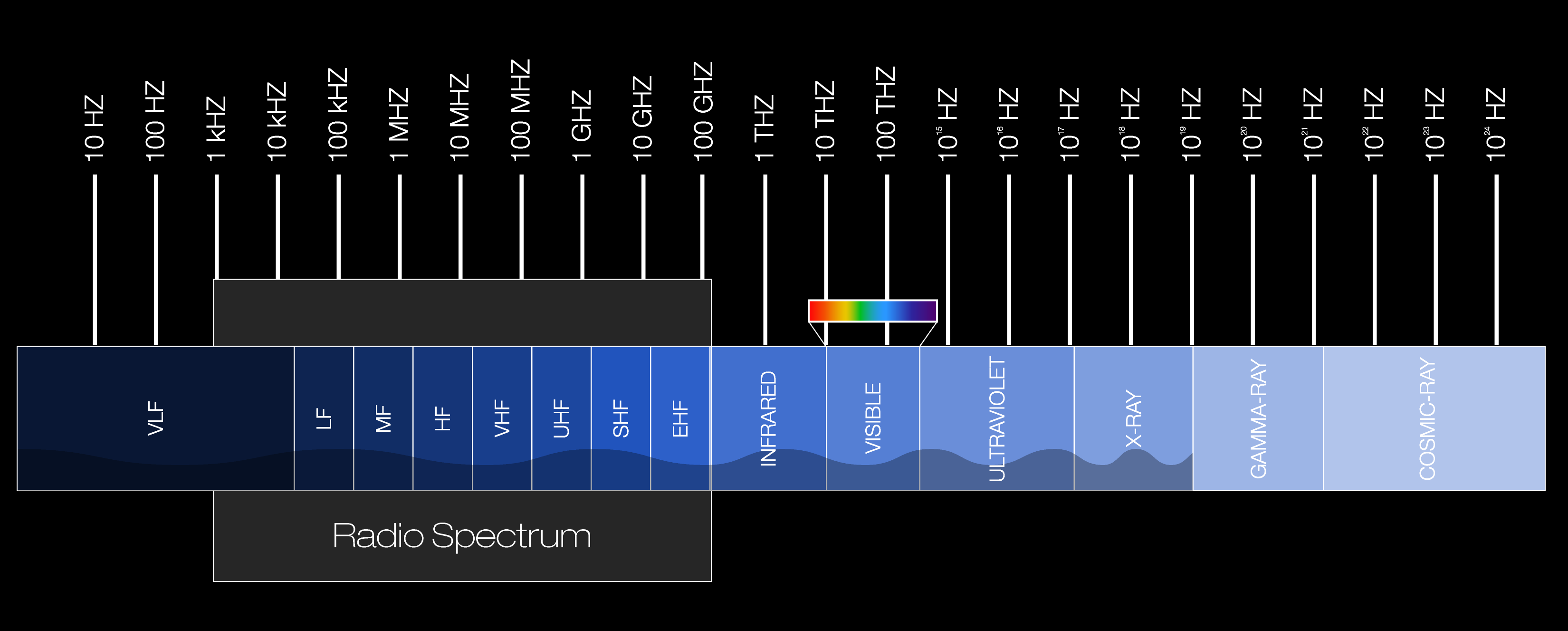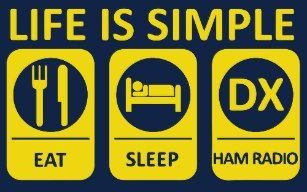By Marcia Wendorf March 09, 2020
When the Internet and Cell Phone Networks Go Down, Amateur Radio Operators Step Up
Preppers have been saying it for years: amateur radio might soon be your only way to communicate.
The Northshore School District, which serves 22,000 students in the Seattle area, announced that they are closing all of their 36 schools due to the COVID-19 virus. Northshore Superintendent Michelle Reid said that classes will be conducted online starting on Monday, March 9, 2020.
Twitter has instructed its almost 5,000 employees to work from home, and Microsoft Corp. and Alphabet Inc. (Google) have done the same for their employees in the Seattle area.
Amazon Inc., which employs 50,000 people in the Seattle area, has instructed its employees to telecommute, and Apple just requested that the 12,000 employees at its Apple Park campus in California also work from home.
With students studying from home, and employees working from home, our internet and cell phone networks are going to be stretched thin, and this can impact your ability to reach emergency responders if you need to.
During 9/11, when cell networks went down due to overloading, and police and fire command centers were destroyed, amateur or “ham” radio operators stepped into the breach and kept emergency responders communicating with one another and with the public.
The term “ham”, as in “ham-handed”, was applied to new, wireless telegraphy operators by wired telegraphy operators to imply that their Morse code skills were poor.
What is amateur radio?
Amateur radio is different from commercial radio, public safety radio such as police and fire, and professional radio used by taxis, airplanes, and ships. The Federal Communications Commission (FCC) sets aside blocks of radio frequencies for satellites, emergency services, military, commercial aircraft, commercial radio stations, and mobile phones.
Amateur radio operators are allocated 27 bands, or groups of frequencies, starting at 1.8 Megahertz (MHz), which is just above the broadcast radio frequencies, and going all the way up to 275 Gigahertz. FM radio stations have numbers on the dial between 88 and 108, which signifies their frequency of 88 MHz to 108 MHz. AM radio stations are always between 540 and 1600 KHz.
More from Interesting Engineering
These blocks of frequencies have different attributes, such as the amount of power that can be used to transmit a signal, the equipment, and antennas that can be used, whether repeaters are allowed, and the available frequencies.
Amateur radio can transmit voice, text, images, data, and Morse code across distances ranging from a city, a region, a country, a continent, the entire globe, or even out into space. Amateur radio can access satellites, the International Space Station, and can even bounce off the Moon.
Amateur radio is administered by the International Telecommunication Union (ITU), which is an agency of the United Nations. It is the oldest global international organization. Individual governments regulate amateur radio within their own borders, and issue station licenses and call signs.
In the U.S., the American Radio Relay League (AARL) is the national association for amateur radio, and it has over 161,000 members. ARRL provides books, news, support, information, special operating events, continuing education classes and other benefits for its members.
Types of amateur radio
There are several types of amateur radio:
- Amateur (ham) radio – 1.8 – 1300 MHz with gaps, base stations can be up to 1,500 watts, while a typical handheld ham radio is 5 – 8 watts, there are few restrictions on antennas and you will need a license
- Citizen’s Band (CB) – 26 – 27 MHz (HF), 11-meter band, 40 channels, power is limited to 4 watts, you don’t need a license, CB requires larger antennas due to its longer wavelength compared to VHF/UHF, and CB is susceptible to interference from baby monitors
- Family Radio Service (FRS) and General Mobile Radio Service (GMRS) – 462 – 467 MHz (UHF), 22 channels, while technically two different types, their frequencies overlap, and in 2017, the FCC changed its rules making the two types even more similar; the FRS block was proposed by RadioShack in the 1990s and led to the two-pack walkie-talkies that were popular, farmers and businesses use GMRS, while you don’t need a license for FRS, you do need one for GMRS but there is no test, GMRS can operate at up to 50 watts but most radios are 3 – 5 watts, GMRS allows repeaters
- Multi-Use Radio Service (MURS) – 151 – 154 MHz (VHF), 5 channels, created in 2000, you don’t need a license, power is limited to 2 watts, some devices pair with your cell phone to send short text messages without using the cell network, allowing for a peer-to-peer radio network.
Of these, ham is the only way to listen to and talk to local emergency services. CB, FRS, GMRS, and MURS don’t work on emergency broadcast and local emergency responder frequencies.
Frequency and wavelength
Frequency is the number of waves per second, and it is described in Hertz (Hz) which is one wave. When you see k, M, or G in front of Hz, it represents kilo, Mega, and Giga, where kilo is 1,000, Mega is one million, and Giga is one billion. A radio frequency of 300 MHz would be 300,000,000 waves per second.

Radio spectrum, Source: NASA
Wavelength is the physical distance of one point on a wave, such as its peak, to the same point on the next wave. Wavelength and frequency are in inverse proportion, that is, the higher the frequency, the lower the wavelength.
High Frequency (HF) is 3 – 30 MHz, Very High Frequency (VHF) is 30 – 300 MHz, and Ultra High Frequency (UHF) is 300 MHz to 3 GHz. Of the 27 amateur radio bands, the most popular are:
| Range | Band (Meter) | MHz |
| HF | 80 | 3.5 – 4.0 |
| HF | 40 | 7.0 – 7.3 |
| HF | 30 | 10.1 – 10.15 |
| HF | 20 | 14.0 – 14.350 |
| HF | 17 | 18.068 – 18.168 |
| HF | 15 | 21.0 – 21.450 |
| HF | 12 | 24.890 – 24.990 |
| HF | 10 | 28.0 – 29.70 |
| VHF | 6 | 50 – 54 |
| VHF | 2 | 144 – 148 |
| UHF | 70 cm | 430 – 440 |
Most amateur radio is focused on just two bands: 2-meter / 144-148 MHz and 70-centimeter / 430-440 MHz. These two bands are what are used by local emergency radio services, such as the Amateur Radio Emergency Service, Radio Amateur Civil Emergency Service, and Community Emergency Response Teams (CERT).
Radio channels are like URLs, you don’t describe a website as its IP address (173.219.163.98), instead, you describe it as “whitehouse.gov.” When people use Channel 19 on CB radio, they’re actually referring to the frequency 27.185 MHz.
The attributes of wavelengths are that longer wavelengths travel farther, and smaller wavelengths can penetrate buildings. Since the higher the radio frequency, the smaller the wavelength, the VHF 2-meter band might travel farther, but the UHF 70-cm band is better at finding its way through windows and doors.
The largest wavelengths travel farther than the horizon because they bounce off of the atmosphere, mountains, and even the Moon. Since an FCC Technician’s License, which you’ll learn about below, doesn’t permit HF, VHF is most popular among amateur radio enthusiasts.
When Hurricane Maria wiped out cellular networks in Puerto Rico in 2017, ham radio operators working with VHF mobile radios and talking on the 2-meter band allowed emergency responders to communicate with one another.
Radio repeaters
What gives ham radio its range are repeaters, which are somewhat akin to cell phone towers. Repeaters receive a nearby signal, then rebroadcast it with more power and clarity.
Repeaters are usually located on top of a hill or a tall building, and they are free to use. They are typically created and maintained by a local ham radio club or operator. One repeater can move your signal up to 50 miles, but if it is handed off by a number of repeaters, your signal can span an entire country.
A repeater can’t receive and broadcast on the same frequency at the same time. Therefore, they use two different frequencies that are slightly offset from one another, one to receive, and one to broadcast.
While some repeaters have solar or generator power, most rely on the electrical grid, so in cases of extreme emergency, these may not be available.
Ham radio setups
All amateur radios are comprised of a transceiver that both sends and receives radio signals, a power supply, and an antenna. The three types of amateur radios are:
- Handheld Radios – also called Handitalkies or HTs, the most popular are the Baofeng UV-5R and BF-F8HP.
- Mobile Radios – are installed in a vehicle such as a CB radio, they are typically mounted in a vehicle’s dashboard, glove box, or under a seat, and they have a corded microphone that runs to the driver’s seat. Mobile radios have at least double the signal range of a handheld radio because of more power from the battery and a larger antenna. The antenna can attach to a car’s hood, roof, or tailgate, and magnetic mounts are popular because you can remove the antenna when you don’t need it.
- Base Station Radios – are typically installed in your home and have a large, immobile antenna. The antenna is the most critical piece of a base station, and it should be at least 1/4 the size of the wavelength you want to use. The UHF 70-cm band only needs a 7-inch antenna.
Ham radio licenses
There are three levels of ham licenses, and each requires a test and lasts for 10 years. The levels differ by how many frequencies you can have access to.
- Technician (entry) – gives you access to amateur bands above 30 MHz, including the popular 2-meter and 70-centimeter bands
- General – gets you into the lower frequency, longer wavelength High Frequency bands that are better for long distances
- Extra (advanced) – allows you to transmit on any amateur frequency.

